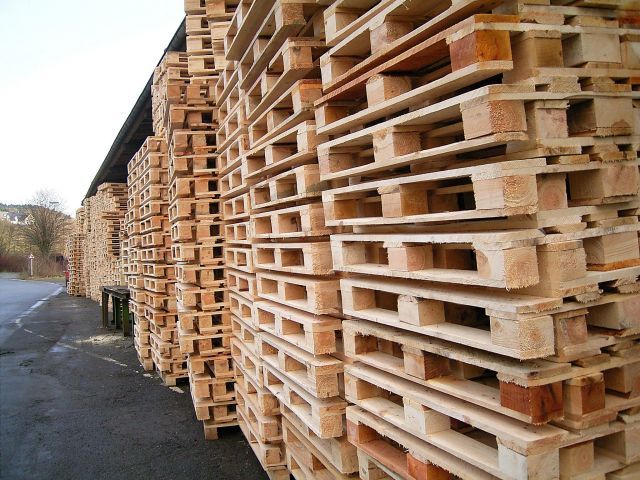This is how you shift 746 million bananas

Originally published September 05, 2015
- Consider the pallet. (Wait, stay with me!) So central is it to modern commerce that Slate has called it 'the single most important object in the global economy'. Popularised as an efficient way to move large amounts of supplies during World War II, there are now over two billion pallets in use in the United States alone.
- If one measure of a good story is its ability to make a seemingly dry topic interesting, this tale of controversy and intrigue in the pallet industry is a corker. People are pretty much at war over pallets.
- The title of the book 'Ninety Percent of Everything' alludes to the estimated proportion of the world's physical products that are transported, at some point in their lives, by shipping.
- That's why shipping containers, where pallets spend a lot of time, are pretty sizeable. And yet shipping behemoth Maersk's 'E class' ship can carry 15,000 of them - which means one ship can transport 746 million bananas at a time. They didn't think that vessel was big enough, though - the new 'triple E class' can carry 18,000 containers.
- The device you're reading this on, the clothes you're wearing, the utensils you use to cook your dinner tonight - there's a good chance they all travelled by sea to get to you. And for that to happen the world's ports need to coordinate the movements of over 500 million individual shipping containers in a year.
- All of which means there are a lot of people working in shipping, leading to subcultures and practices that have endured for generations, and which may seem outlandish to landlubbers. An extreme, wince-inducing example is that of the Filipino seafarers who - oh my God - ritualistically cut open their penises and insert little M&M-sized balls into them.

Curiosities & curations
- Google changed their logo a bit, and while the majority of the world shrugged, a vocal minority lamented its serif-less Crayola vibes. Favourite rant: Sarah Larson's in The New Yorker, in which she rages at 'a demented, showboating “e.” I don’t want to think about that “e” ever again.'
- Bristlr started as a LOLsome app ’connecting those with beards to those who want to stroke beards’. Then it became very popular and now the creator is pursuing it as an ongoing venture.
- I'm always oddly cheered when a company shares their style guide with the world. Mailchimp just released their latest.
- Talking of which - Frontify is a tool to to help you quickly create a web-based style guide.
- 'Something happened.' 'Invalid object.' 'Error no. 134934144666//'. How to write error messages that don't bemuse and confuse.
- I interviewed an interesting chap called Adam. He's a chef who also happens to produce very long, very detailed podcasts about classic movies.
- The horn-festooned chorus of John Newman's 'Come and Get It' simply refuses to leave my brain.
- I can't stop watching this. And now you can't either.